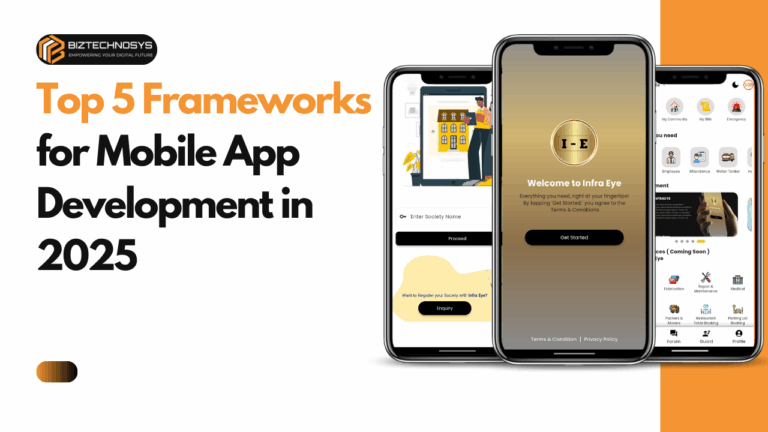
Cross-platform development refers to the practice of creating mobile applications that can run on multiple operating systems—primarily iOS and Android—using a single codebase. This approach is a key component of modern mobile app development and contrasts with native app development, where separate codebases are needed for each platform.
In essence, cross-platform development allows developers to write code once and deploy it across various platforms. This technique saves time, reduces costs, and ensures consistency in user experience across devices.
An example of a cross-platform application is Instagram. It operates seamlessly across both Android and iOS platforms, likely leveraging technologies that allow consistent functionality and interface design using shared components.
Several programming languages support cross-platform app development:
JavaScript (React Native, Ionic)
Dart (Flutter)
C# (.NET MAUI)
HTML/CSS/JavaScript (Cordova) These languages allow developers to build applications that run efficiently across multiple platforms.
Continue reading about 10 Best IoT Platforms for 2025 with this link.
Cross-platform development simplifies the development process, reduces maintenance efforts, and allows businesses to reach a wider audience without developing multiple apps from scratch.
Native Apps: Built specifically for one platform using native languages (Swift for iOS, Kotlin for Android). They offer high performance but require more resources.
Cross-Platform Apps: Built using a shared codebase, they reduce development time but may have limitations in accessing device-specific features.
Pros:
Faster time to market
Cost-effective
Uniform design and performance
Easier maintenance
Cons:
Limited access to device-specific features
Performance may lag behind native apps
Potential UI inconsistencies
Continue reading about How Sitecore’s AI Features Can Transform Your Marketing Strategy with this link.
React Native, developed by Facebook, uses JavaScript and React. It offers near-native performance and a large community of developers, making it a popular choice for mobile app development services.
Core Features:
Hot reloading for real-time updates
Rich ecosystem with third-party plugins
Native module support for device-level functionality
Large community and strong community support
Flutter, developed by Google, uses the Dart language and provides a rich set of pre-designed widgets. It is ideal for crafting high-performance applications with attractive interfaces.
Core Features:
Widget-based UI for customized interfaces
Fast development with hot reload
Native performance on both iOS and Android
Strong support from Google and growing developer community
Microsoft’s .NET MAUI allows developers to build native and cross-platform apps using C#. It is deeply integrated with Visual Studio, making it a robust choice for enterprise-grade applications.
Core Features:
Single codebase for Android, iOS, macOS, and Windows
Access to native APIs via .NET bindings
Strong tooling support with Visual Studio
Integration with Microsoft Azure for cloud-based apps
Cordova leverages web technologies like HTML, CSS, and JavaScript to build apps. It’s perfect for developers coming from a web development background and looking to transition to mobile.
Core Features:
Uses standard web technologies
Wide plugin support for native device functionality
Compatible with multiple platforms
Active community support
Continue reading about Benefits of Sitecore Development with this link.
Ionic is another web-based framework that enables hybrid app development. With strong integration with Angular and a rich set of UI components, it’s an excellent framework for creating modern mobile applications.
Core Features:
Pre-built UI components for fast development
Native plugin access via Capacitor
Web-first approach for easier learning curve
Integration with Angular, React, and Vue
It is the process of building mobile apps that can run on both Android and iOS using a single development stack, enabling faster deployment and unified app maintenance.
In the context of Android, cross-platform development allows building Android apps that share their codebase with iOS or other platforms using frameworks like Flutter or React Native.
These frameworks provide the tools and libraries necessary to create apps that work across platforms. The right framework balances performance, ease of use, and community support.
Continue reading about Drupal for E-commerce with this link.
Consider the following factors:
Project budget and timelines
Required performance and UX quality
Access to native device APIs
Developer expertise and community support
Long-term maintenance and scalability
At SaM Solutions, we specialize in mobile app development, offering a full suite of mobile development services—from ideation to deployment. Whether you need a cross-platform solution or a native mobile experience, our team of mobile application developers is equipped to deliver tailor-made mobile apps using the best mobile app development software and frameworks.
Continue reading about Is Drupal Secure? with this link.

We are your Strategic IT Partner in development of reliable and scalable IT solutions for any OS, browser and device. We bring together deep industry expertise and the latest IT advancements to deliver custom solutions and products that perfectly fit the needs and behavior of your target audience.
Skype :: biztechnosys
AUS :: +61 4684 88455
INDIA :: +918035827097
Email :: info@biztechnosys.com
Copyright © 2012 – 2025 BIZTECHNOSYS. All Rights Reserved.